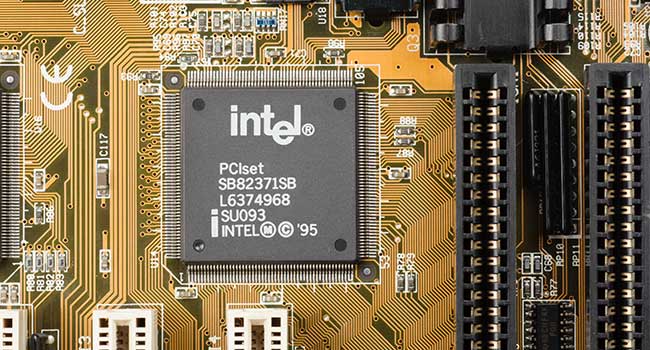
Major Security Flaws Found to Affect Nearly All Computers
The vulnerabilities, which were originally believed to only be in Intel chips, affect a variety of chip vendors and could allow hackers to steal the entire memory contents of computers, mobile devices and services running in cloud computer networks.
- By Jessica Davis
- Jan 04, 2018
[UPDATED January 5, 2018, at 9:38 a.m.]
Two major security flaws have been discovered in the microprocessors inside nearly all computers. The vulnerabilities, which were originally believed to only be in Intel chips, affect a variety of chip vendors and could allow hackers to steal the entire memory contents of computers, mobile devices and services running in cloud computer networks.
The two security flaws, called Meltdown and Spectre, allow programs to read and steal data from other programs on a computer. This could include stored passwords from a browser or password manager, personal files, important documents and online communication like emails.
Software patches can help with Meltdown, and Microsoft and Google have already issued emergency patches, though they could slow the performance of devices by as much as 20 to 30 percent.
Spectre, unfortunately, won’t be as simple to resolve. Researchers believe it’s a more difficult flaw to exploit, but it affects most microprocessors now in use, and there is no known fix. Some experts believe it could ultimately warrant a complete redesign of hardware, an expensive task.
“We’re talking about an average, $1,000 per computer versus a free software patch,” said Devon Ackerman, associate managing director of the cybersecurity and investigations practice at risk mitigation firm Kroll. “Basically, I am replacing the entire computer with something that is a newer generation, something that is no longer susceptible to this exploit at a hardware level.”
As a result, Spectre may not be solvable until new chips hit the market. Paul Kocher, the president and chief scientist at Cryptography Research, a division of Rambus, said the threat from Spectre is “going to live with us for decades.”
“This will be a festering problem over hardware life cycles. It’s not going to change tomorrow or the day after,” Kocher said. “It’s going to take a while.”
Both the U.S. Department of Homeland Security and Britain’s National Cyber Security Centre are monitoring the situation with both vulnerabilities but say they have not yet seen evidence that the flaws are being exploited.
Original story below.
A hardware bug may make all computers with Intel Corp. chips from the last decade vulnerable to hackers, according to a report released by The Register on Tuesday. Fixing the bug will require patching at the operation system level.
The circumstances of the security exploit have not been publically released due to security concerns, but the bug is related to the way regular apps and programs can access the contents of protected kernel memory and could be present on Intel processors made in the past 10 years. Hackers could potentially exploit security weaknesses to access security keys, passwords and other files in protected kernel memory.
The fix appears to be to implement Kernel Page Table Isolation, making the kernel essentially invisible to running process. Unfortunately, patching the operating system and updating the security could slow down older machines by between 5 and 30 percent, according to the Register.
The Register’s report said that programmers have been working since November on a software patch that addresses the issue. Linux patches and a partial fix for the bug in macOS have been rolled out, and Microsoft is expected to release a fix soon.
About the Author
Jessica Davis is the Associate Content Editor for 1105 Media.